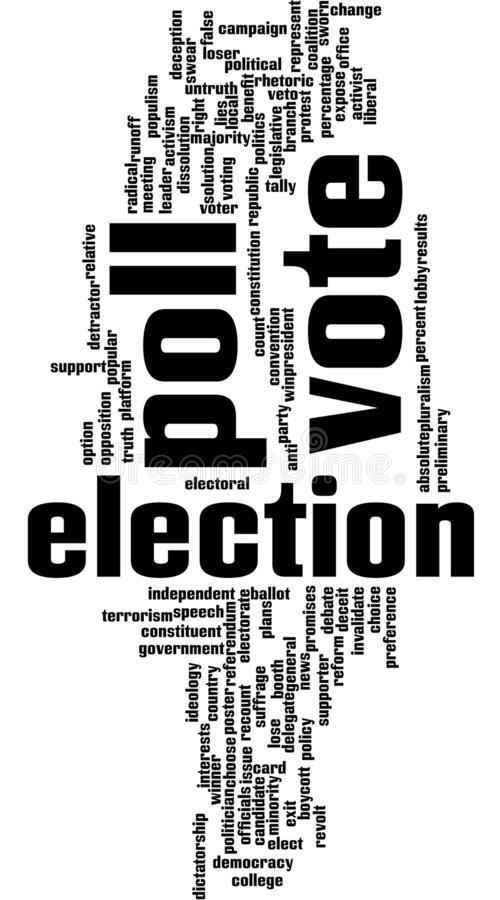On Election Day, my GovTrack hat comes off, and another hat goes on: I am an election worker in Florida. This will be my fourth election. I’m the Equipment Operator for my precinct.
This is a skilled, paid position with training before every election. This year, Florida will have had a Presidential Preference vote in March, a primary election for all other offices in August, and finally, the general election in November. By November 5th, I will have had training three times.
My role starts the day before Election Day when the precinct staff meets at the polling place to arrange tables, set up the voting booths, and check in with the facility staff responsible for letting us in the next morning. On the day of the election, I’m up around 4 a.m. to get back to the polling place a little before 6 a.m. (By the way, I vote early because the polling place I’m assigned is not my polling place.)
Florida law gives the public the right to observe setup, but since 2018, when I started, no one has. The setup process is fairly rote, and I’m given a checklist to make sure I do it all in the correct order and way, including:
- Unlocking & unsealing the part of the tabulator where the marked ballots will go and verifying there are no marked ballots from any previous elections in there (there has never been an old ballot in there, but we still check)
- Turning on the machine
- Verifying that its count is at zero that it has the right precinct number, date, and time (it always has been right, but we always check)
- Getting the rest of the workers to review and sign the report that is automatically printed and shows the above
- Setting up the accessible voting machine
The staff assigned to the ballots and check-in have their own procedures. There’s also a person called the Poll Deputy who makes sure no campaign activity takes place within 150 feet of the precinct (we’re supplied with a handy pre-measured rope), sets up directional signs, and controls the flow of voters. If it’s a nice day, that’s probably the best job because you get to spend it outside in the sun.
Then, we all take our oath of office, make sure we have our badges on, and get some coffee before opening the doors at 7 a.m. sharp.
7 am to 7 pm
Each voter starts at the check-in desk. Florida requires voters to show ID and verify their signature at check-in. Then, they’re given a receipt that they take to the ballot table. At the ballot table, they’re given their ballot in exchange for the receipt, and then they go to one of the booths to vote.
When they’ve finished, the voter comes to my area, puts their ballot in the machine, and as soon as I hear the thunk of the ballot landing in the box and see the number increase on the screen, I thank them for voting and offer them a sticker. My role is to see the ballots successfully run through the tabulator and get counted. If there’s a paper jam, I help clear it. If a voter gets an error message (too many choices for one contest, mismarked ballot, and similar issues), I explain the message, and they can decide to cast the ballot as is, go back for a new one, or live with it not being cast at all.
If someone wishes to use the accessible machine, the machine prints their selections. It’s basically a complicated pen. While it was initially set up with hearing and vision-impaired voters in mind, anyone can use it, and examples have included folks with temporary issues like forgetting to bring their reading glasses. The ballot from this machine goes into the tabulator just like all the others.
Once an hour, the clerk checks with each station to see how many check-ins there have been, how many ballots have been issued, and how many have been tabulated. These numbers should match (and since I started, they have always). That way, when 7 pm rolls around, there’s no surprise.
7 pm to 8 pm
Doors close at 7 pm sharp. The public may observe the evening checklist just as it was set up. Two reports now printed from the tabulator are the first time we see any information other than how many ballots were cast. One goes to the Supervisor of Elections office. This copy is reviewed & signed by all of the precinct staff. The other copy is taped to the door of the precinct for anyone who comes by to view. This is also the only time of day that the tabulator is online. When it’s finished transmitting results to the Supervisor of Elections, it begins to shut down. Then I unseal and pull out the ballot box from the tabulator, ensure nothing’s left inside, and lock and seal the ballot box. When we all leave, it will go with the clerk to the Supervisor of Elections.
Then, while the clerk does some closing paperwork, the rest of us pack and lock up all the other equipment, and at about 8 pm, we go home.
What I want to convey is that this is a highly prescribed task. As of October 2020, the election code was 184 pages. We’re not freestyling. Due to Hurricanes Helene and Milton, Gov. DeSantis has approved some modifications to rules for polling places and mail-in voting. However, overall, the process will still be similar in polling places throughout the state.
Maybe I’ll even see you on Election Day.

